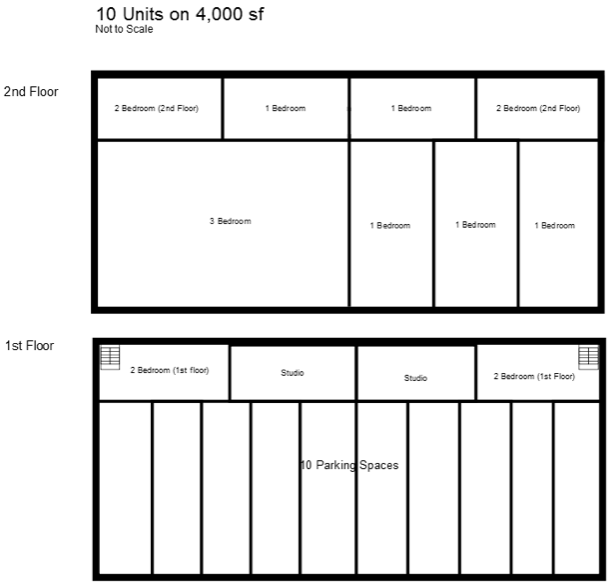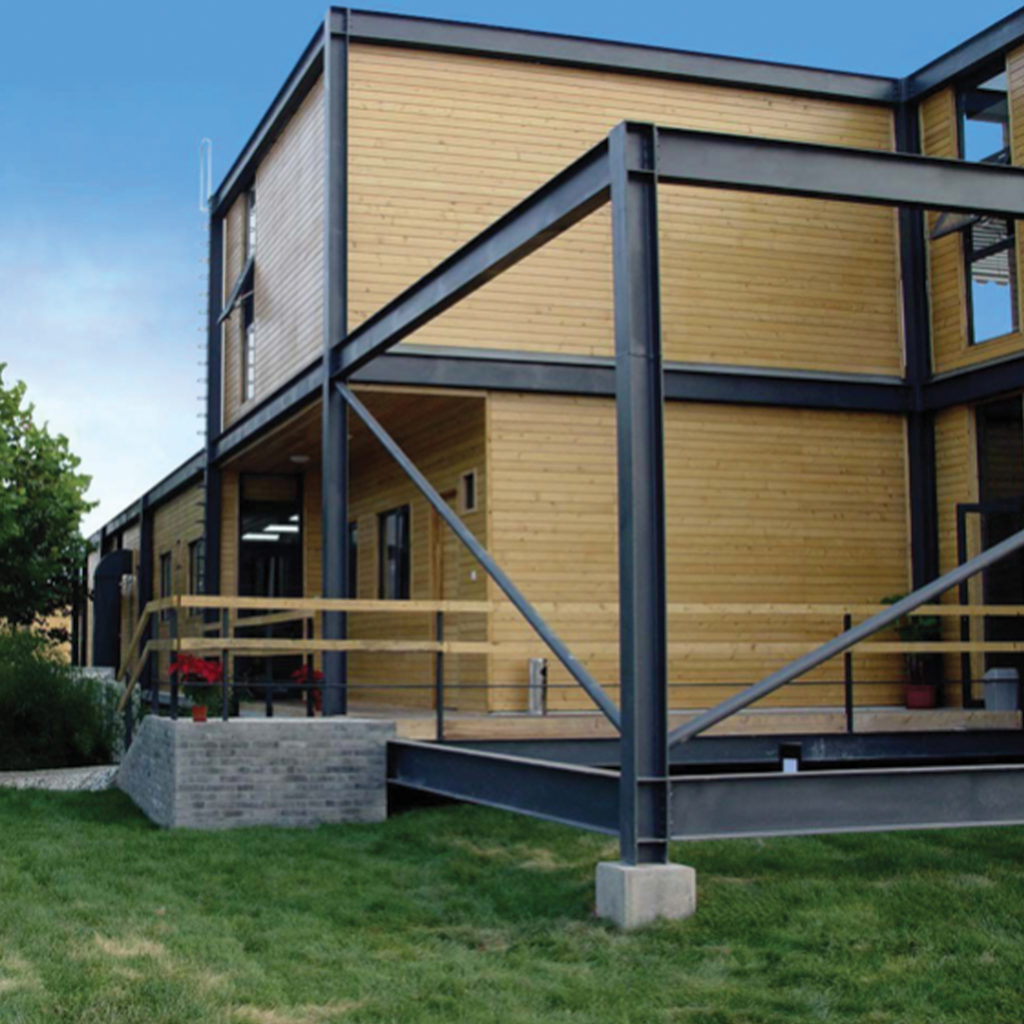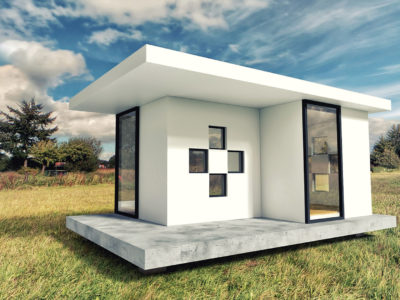34 percent of all American workers made less than $20,000 last year. This is between 42.83 and 51 million workers, or 15,600 out of 100,000 population. By the way:
- 48 percent of all American workers made less than $30,000 last year.
- 59 percent of all American workers made less than $40,000 last year.
- 68 percent of all American workers made less than $50,000 last year.
We are going to start by building 8,000 units in every 100,000 population Community. In a 100,000 population there might be:
- 56,000 households
- 9,000 with kids
- 47,000 without kids
- 20,000 family
- 36,000 non-family
- 1.79 people per house
Guesses:
- 11,000 married couples without kids (2 people)
- 9,000 couples (2,000 with 1 kid, 7,000 with 2 kids)
MATH SUGGESTS
- 28,000 single residents (50% studios)
- 19,000 couples / roommates (34% one / two bedrooms)
- 2,000 couples with one kid (3.5% 2 bedrooms)
- 7,000 couples with two kids (12.5% 3 bedrooms)
BREAKDOWN
- Need to buy land for Community Trust Capable of building 8,000 – 9,000 units.
- 1,000 Micro Housing (12.5%)
- 1,000 Studios (12.5%)
- 3,000 1 bedroom (37.5%)
- 2,000 2 bedroom (25.0%)
- 1,000 3 bedroom (12.5%)
EXAMPLE 1:
- 4,000 sf Apartment Building @ $1.20 / sf = $4800 in total rent needs to be collected
- Apartment would cost $400k to build ($100 / sf), meaning $1,400 home insurance or $116 / month total
- Paying $360k for the land would mean a $3,600 LVT or $300 / month total
- Maintenance of the Property would equal 1% of $400k building cost, meaning $4,000 or $333 / month total
- TOTAL = $749 for extra costs, so monthly mortgage payment on Bank Loan cannot exceed $4000
NOTE: to cover for vacancies throughout the year, smart to only have a $3600 / month loan payment (this would cover each apartment being vacant one month during the year). This means no more than a $760,000 Loan to build 4000 sf could build 4,000 sf on 0.1 acres (4,356 sf)
- 10 parking spaces = 90’ X 18’ = 1620
- 90’ X 30’ footprint (2700 sf), with 1300 sf on second floor could have ten 400 sf places for $480 / month each
CHALLENGE
- California, for instance, has average real estate costs of $630,000. To buy this and build 4000 sf on it at $100 / sf makes our loan over $1 million (we need it to be $760,000.
- Without the “vacancy cushion”, loan still can only be $840,000)
What amenities do we want to include with our Housing?
- Net Zero Energy or Passive House
- Modern Waste Management Techniques
- Modern Transportation Concepts (off street parking for one)
- Renewable Energy / Federal Communication Grid Attached
Inertia Homes – $51.89 per sf – $60 per sf

Affordable Housing Strategies
- Have a company like Enertia Homes or other Net Zero housing companies design and build $100 / sf models, make them rich, supply them with free lumber.
- We already own the iron ore, trees, limestone, aggregate, etc to make our own steel, lumber, concrete / cement, and even hemp. We will start our own materials businesses to keep our infrastructure costs down, meanwhile eliminating our carbon footprint in the process.
- In some cases, city will give it away some of its undeveloped property (Community Land Trust) – this generosity can lead to single family home construction, for low income individuals who still wish to own a home – it would also be more cost effective to put single families who wish to rent into these small homes as well (it will also keep small children near other small children).
- We will take on some REO properties, if we get at least a 20% minimum reduction on land.
- If current home owners are struggling to pay the mortgage on their property, perhaps We could:
- absorb their loan into our Bank
- build on property, fill it with residents, and help them pay for the loan (owner becomes landlord, but must adhere to our rent pricing)
- Perhaps people own more than one home, need a tax break, and some kind of win/win can be negotiated.
A Construction Business Model
GOAL: To house 42.5 million low income but hard-working Americans
We will take out a Bank Loan equal to an average $70,000 per renter (because a $333 per month mortgage would cover such a loan, which we will designate as an “affordable” amount)
- 42.5 million renters X $70,000 per renter = $2.9766 Trillion (Wow!)
- This is an 8 year project, so this means each year we will need a
- $372 Billion Loan (which will yield $639.35 Billion in 30 years)
- Monthly payments = $1.78 Million [or around $21.3 Billion a year]
Affordable Housing Broken Down
Cost of Building 4000 sf housing: Residential Construction Site Work Cost (making land habitable) = $23,000 average [?]
- Permits, fees and inspections: $3,650
- Impact study cost, if required: $1,750
- Architecture & site engineering fees: $4,600
- City water hookup: $1,500 or Well: $4,500
- City sewer hookup: $2,300 or Standard septic system: $3,700 or Engineered (mound) septic system: $13,500
Excavation and Foundation Cost: Average total cost: $29,900 [worst case = $66,600]
- Cost range: $10.75 to $19.25/sq. ft.
- Average cost: $16.65/sq. ft.
- Share of total home cost: 11.7%
Itemized excavation and foundation average costs:
- Dirt work – removing topsoil, digging the foundation, adding drainage and pea stone and
- backfilling: $7,600
- Concrete slab: $5.50/sq. ft.
- Concrete crawl space: $8.85/sq. ft.
- Full concrete basement: $11.75/sq. ft.
Home and Roof Framing: Average total cost: $46,400 [worst case = $59,000] Cost range: $14.75 to $27.00/sq. ft.
- Average cost: $18.80/sq. ft.
- Share of total home cost: 18.0%
- Electrical = $17,400 ($4.35 / sf X 4000 sf)
- Plumbing = $18,000 ($4.50 / sf X 4000 sf)
- HVAC – Heating, AC and ductwork average cost: $12,700 [worst case: $20,320]
Exterior construction costs:
- Roofing: $3.90/sq. ft. = $15,600
- Siding/cladding: $7.50/sq. ft. = $30,000
- Windows, doors and garage door: $3.30/sq. ft. = $13,200
Interior Finishes: Average total cost: $76,355 [worst case: $88,000] Cost range: $21.75 to $44.75/sq. ft.
- Average cost: $30.60/sq. ft.
- Share of total home cost: 29.6%
Includes:
- Insulation: $2.35/sq. ft.
- Drywall: $4.30/sq. ft.
- Painting: $3.15/sq. ft.
- Flooring: $4.85/sq. ft.
- Doors and trim: $3.45/sq. ft.
- Appliances: $3,925
- Light fixtures and covers: $3,150
- Plumbing fixtures: $4,000
- Fireplace: $2,485
- Cabinets and countertops: $14,100
Cost of Final Construction Steps
- Average total cost: $17,800 [worst case: $28,480]
- Share of total home cost: 6.9%
Includes:
- Final grading and landscaping: $6,255
- Driveway: $5,525
- Deck, patio or gazebo: $4,865
- Construction cleanup and waste disposal: $1,925
TOTAL (the private sector cost) = $379,600
TAKEAWAY: We wanted to stay under $400k, so our goal seems reasonable
Home Construction Teams
Project Manager
$108,812 [range typically falls between $94,841 and $122,619]
Contractor
$31,018 – $131,594 a year, hourly rate of $14.62 – $60.57
Subcontractors
- Fireplace
- $33,100 per year or $16.97 per hour
- Roofing
- average $18.54 per hour, or $38,570 per year [highest paid earned $28.89 per hour or $60,090 per year
- HVAC
- median hourly rate: $20.98, or $43,640 per year. The most qualified HVAC installers make $50,000 per year
- Framing
- $41,392 a year [annual salary ranges from $24,500 to $63,000]
- Finishing Carpentry
- $44,952 a year [annual salary ranges from $24,500 to $63,000]
- Painting and Wall Covering
- $18.25 per hour, or $37,960 a year
- Exterior Doors and Windows
- $47,866 a year. A Window Installer annual salary ranges from $20,500 to $97,500
- Drywall
- $38,890 to $56,726 with the average base salary of $46,938
- Exterior Siding
- $46,800 per year or $24 per hour. Range is $26,130 [entry level] to $79,560 per year [most experienced]
- Electrical Wiring
- average yearly salary of $64,685, around $31 per hour (in California)
- Plumbing
- average $24.92 per hour, or approximately $51,830 per year
- Flooring
- $37,472 a year. A Flooring Installer annual salary ranges from $19,500 to $63,500
- Masonry
- median annual wage for masonry workers was $42,900 [$61,840 in Hawaii]
- Interior Doors
- $40,479 a year. A Commercial Door Installer annual salary ranges from $23,500 to $56,500
- Technology (Cat 5 wiring)
- $39,520 per year
- Ceramic Tiles
- $41,134 a year. A Ceramic Tile Installer annual salary ranges from $26,000 to $59,000
- Security
- $49,402, highest paid make $24.58 an hour ($51,000 a year)
- Kitchen Cabinets
- $39,969 a year [annual salary ranges from $22,500 to $61,000]
- Kitchen Countertops
- $34,000, $15.33 per hour
- Carpeting
- $44,653 [range typically falls between $36,936 and $54,915]
- Concrete Flatwork
- The best-paid earned $68,470, while the lowest-paid earned $26,590
- Foundation
- The best-paid earned $68,470, while the lowest-paid earned $26,590
- Landscaping Contractor
- $47,627 a year [annual salary ranges from $20,000 to $97,000]
- Landscaping
- Hourly wages typically start from $8.12 and go up to $22.70- Crew members (landscaping / groundskeeping) earn an average wage of $12.07 per hour, or $25,110 per year
Grouping the Construction into 6-week time frames
Group One
- Land development
- Time frame: 4-10 weeks
- Site preparation involves the demolition or wrecking of buildings and other structures, clearing of building sites and sale of materials from demolished structures. Site preparation also entails blasting, test drilling, landfill, leveling, earth-moving, excavating, land drainage and other land preparation
Group Two
- Foundation
- Time frame: 5-10 days including up to 7 days to allow the concrete to cure before building on it
- Home and Roof Framing
- Time frame: 7-14 days
- Exterior finish [siding, roofing, windows, door, garage door]
- Time frame: 4-10 days
Group Three
- Interior rough-ins such as plumbing, electrical, HVAC
- Time frame: 7-14 days
- Interior finish [drywall, flooring, cabinets, countertops, insulation, painting, flooring, doors, trim, appliances, light fixtures and covers, plumbing fixtures, fireplace]
- Time frame: 14-35 days
- Final grading and landscaping [plus Driveway and deck]
- Time frame: 7-21 days, weather permitting
Order of Execution
- Grading and site preparation
- Foundation construction
- Framing
- Installation of windows and doors
- Roofing
- Siding
- Rough electrical
- Rough plumbing
- Rough HVAC
- Insulation
- Drywall
- Underlayment
- Trim
- Install exterior driveways and walkways
- Painting
- Finish electrical
- Bathroom and kitchen counters and cabinets
- Finish plumbing
- Carpet and flooring
- Complete exterior grading
- Finish HVAC
- install bathroom fixtures
- Hookup to water main, or well drilling
- finish exterior landscaping
- Hookup to sewer or installation of a septic system
Punch list – document prepared near the end of a project listing work not conforming to contract specifications that the general contractor must complete prior to final payment.

PLAN
- Make Construction Teams (X number of teams per 100,000 population) Project Manager (Health Construction, Education Construction, Housing Construction, Transportation Construction, Energy Construction, Power Grid Construction)
- For Housing Construction, for instance, sub contractors work in rotations, moving from house to house (the time frames suggest 3 rotations of perhaps 6 weeks, but the Contractors can break their teams into whatever subgroups they feel is most efficient. Three rotations implies a Team is in charge of 3 residences at a time.
- Bottom Line: We are about finished projects. Full payment comes to people who completely finish their job, or even can come only when a residence has been officially completed. No hourly wage. No yearly salary. Everyone makes a percentage of the entire project. We will fashion payment so that completion of two residences will equal a good yearly salary. For more ambitious teams, there is a lot more money to be made.
- Every 100,000 population need 1,000 residences completed, and we would like to do that in 2 years (although perhaps it might take 4 at the most). To encourage hard work, when a team completes a house, they can claim another property and start on an additional house. The jobs are there for whoever is the most motivated to take them.
- Additionally, if some 100,000 populations finish their area early, we will allow them to go into slower areas and begin on those houses. We just want to get this done. Working faster does not necessarily mean we are getting the best work, but usually the slower someone is, the less experienced they are, so efficient and experienced and motivated teams will most likely move along at a faster pace, and should be rewarded. Whether in school or on the job, we do not want to hold people back.
A FINAL WORD ABOUT WOOD
Generally, the $350 per 1,000 board feet of lumber works out to
- 12.5% for harvesting it ($44 per 1,000 bf)
- 12.5% for hauling it to the mill ($44 per 1,000 bf)
- 30-35% for milling it ($110 per 1,000 bf)
That leaves at least 40% for the cost of the wood, and some profit derived from it – but we are not about profit, we are trying to build cheap housing.
Our 4,000 sf homes will need:
- Low end: 25,000 bf of wood (6.3 bf per 1 sf of house) current price is $350 per 1,000 board feet – our price should be 40% less, or $210 per 1000 bf X 25 = $5,250
- High end: some estimates say 8,000 bf of wood and 3,000 bf of structural panels (plywood) 11,000 bf (for 1000 sf house) X 4 = 44,000 bf X $210 per 1000 bf = $9,240
Framing Labor – $6-8 per square foot – We will have free labor available in our Construction Apprentices from our High School Associate degrees in construction, so we will figure low end: $6 X 4000 sf = $24,000

